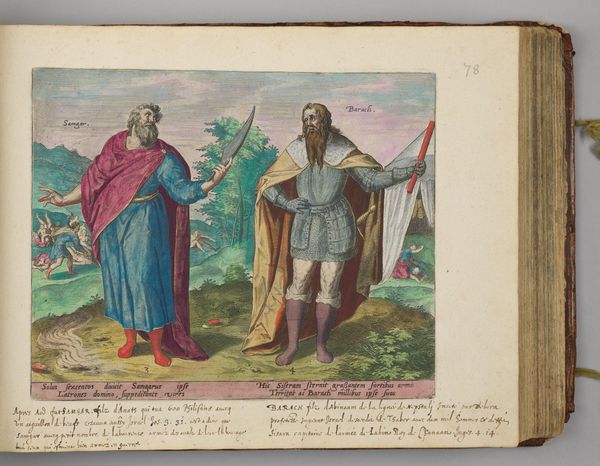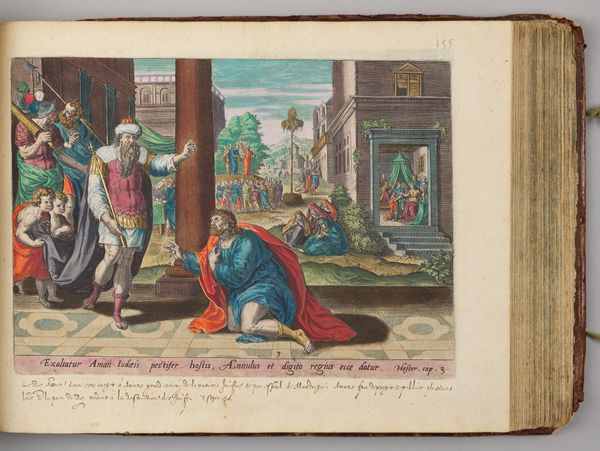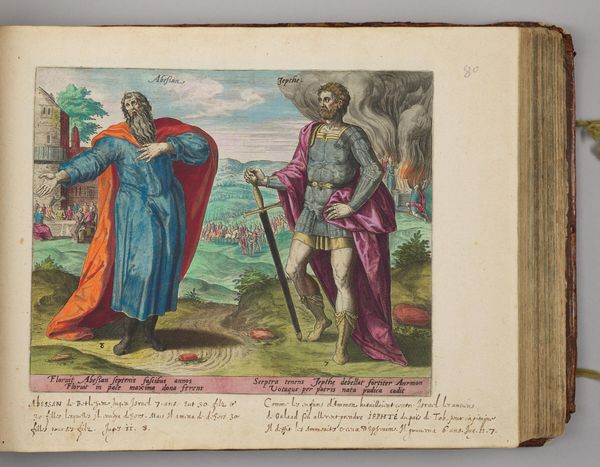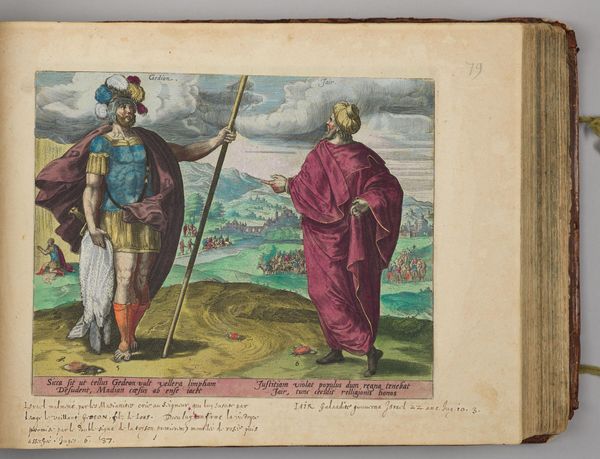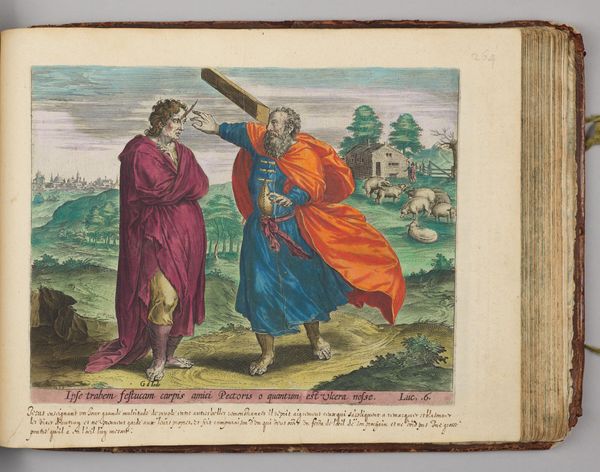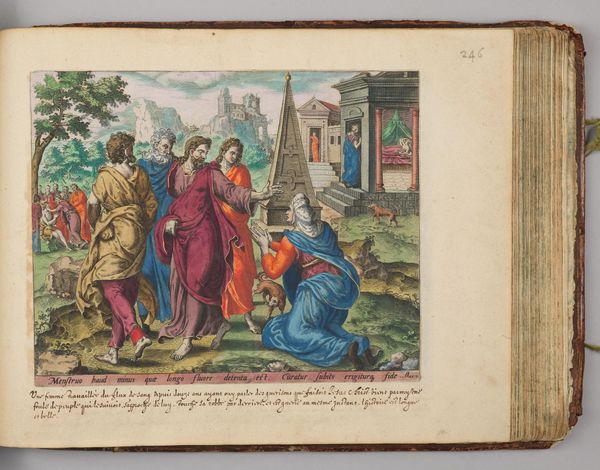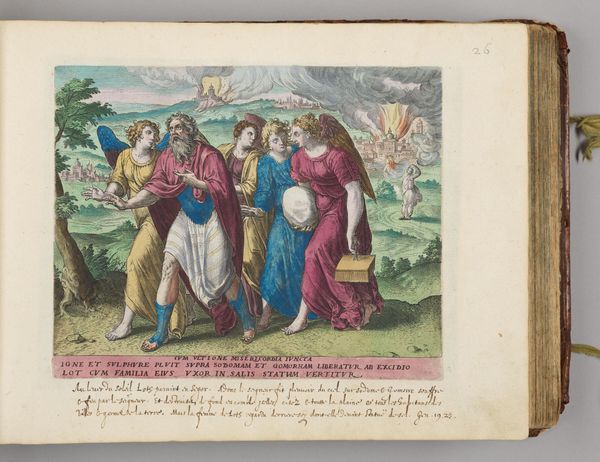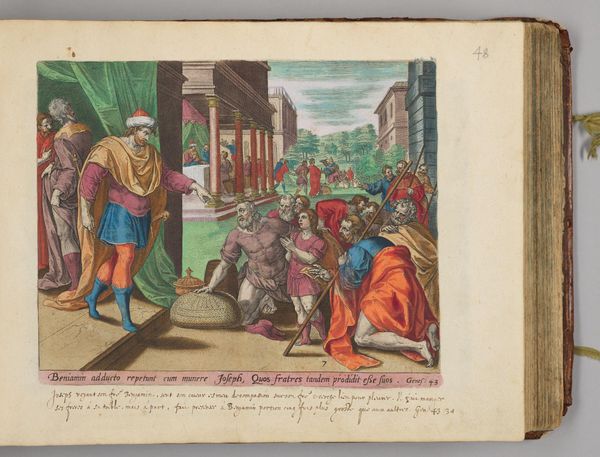
Jeroboam and the Prophet Ahijah Renting the New Garment in Twelve Pieces c. 1579
0:00
0:00
Dimensions: sheet: 27 x 36.4 cm (10 5/8 x 14 5/16 in.) plate: 20.4 x 28.7 cm (8 1/16 x 11 5/16 in.)
Copyright: CC0 1.0
Curator: This is Hans Collaert the Elder's "Jeroboam and the Prophet Ahijah Renting the New Garment in Twelve Pieces." Editor: It's quite striking, visually. The tearing of the garment feels symbolic of a larger societal rupture. Curator: Absolutely. Collaert’s printmaking process, especially the use of engraving, allowed for the precise and repeatable depiction of this key biblical narrative, disseminating the story and its political implications widely. Consider the material realities—the paper, the ink, the labor involved. Editor: It's interesting how the garment becomes a contested object, almost a stand-in for power and control. And the prophet Ahijah—is he a figure of resistance, challenging the status quo? The division suggests a profound redistribution of power. Curator: Precisely. We see how religious narratives were often intertwined with political anxieties about leadership and national identity, particularly the question of who gets what. Editor: This work really brings to light the intersection of religion, class, and politics in visualizing biblical events, prompting us to consider the broader social dynamics at play in its interpretation. Curator: Indeed, and through a materialist lens, we can see the tangible impact of printmaking technology on the circulation of such ideas. Editor: Thank you. It's fascinating to see the artist grapple with power dynamics in such a visual and symbolic way.
Comments
No comments
Be the first to comment and join the conversation on the ultimate creative platform.

